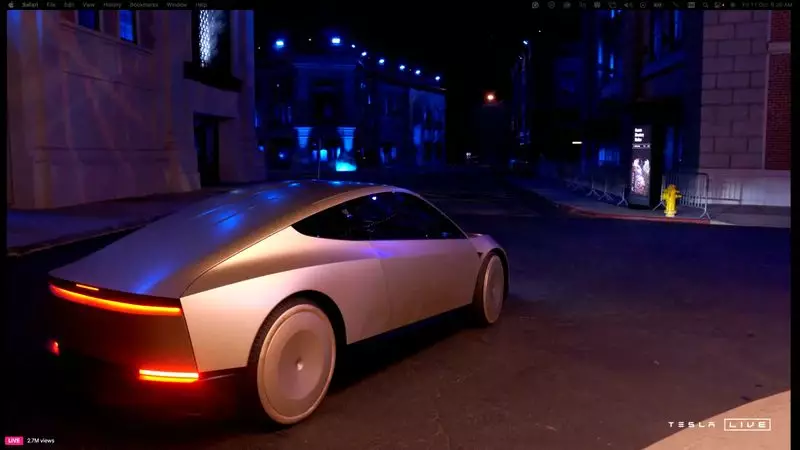In a highly anticipated showcase, Tesla CEO Elon Musk revealed an innovative addition to the electric vehicle landscape: the Cybercab, a revolutionary robotaxi designed without traditional controls like steering wheels and pedals. Unveiled during an event aptly titled “We, Robot,” this model is aimed at transforming personal transportation into a fully autonomous service by the year 2026. Musk’s announcement hinted at a competitive price point below $30,000, alongside operating costs remarkably low at just 20 cents per mile. This ambitious model not only embodies Tesla’s push towards autonomy but embodies Musk’s vision of maximizing vehicle utility, where cars could potentially be used up to ten times more than current standards.
Musk’s fervor for robotaxis rests on the premise that an abundance of parked cars represents an enormous waste of resources. He envisions a future where self-driving technology can significantly extend a vehicle’s utility. The introduction of Cybercabs coincides with Musk’s assertion that most vehicle owners are underutilizing their cars for the majority of the day. His emphasis on higher frequency utilization for autonomous vehicles underscores a new evolution in how we perceive personal mobility.
Despite the electrifying energy surrounding the event, the mood among investors and analysts remains mixed. On one hand, social media buzz revealed eager anticipation; on the other, many industry experts caution against inflated expectations regarding Tesla’s new technology. A notable presence at the event was John Elkann, the chairman of Stellantis, illustrating the high interest from automotive leaders surrounding Musk’s vision. The skepticism largely centers on the technological viability of such endeavors. As Musk focuses his narrative on Tesla being an AI robotics company rather than merely an automobile manufacturer, attention gravitates toward how this robotaxi will operate under real-world conditions.
While the allure of a ride-hailing app powered by a fleet of self-driving Cybercabs excites some, legitimate concerns persist regarding the practicality of scalability and financial performance. Queries abound regarding Tesla’s ability to achieve substantial production scale and whether they can replicate the immense success of traditional taxi services. Analysts closely monitor Tesla’s progress with its Full Self-Driving technology, which is critical to supporting the purported operational framework of the Cybercab project.
The journey to fully realized autonomous vehicles has been fraught with challenges. Over the years, Musk has made grand proclamations about imminent breakthroughs, including promises from as early as 2019, when he indicated that operational robotaxis would be available by 2020. However, a series of delays and missed deadlines have caused investors to hesitate, casting doubt on the feasibility of the timeline Musk proposes. With rising competition and the looming threat of declining EV sales, Tesla must demonstrate tangible progress.
Moreover, the driver-assistance system that Tesla markets under Full Self-Driving has faced significant hurdles. Legal scrutiny has emerged from accidents involving the technology, highlighting the complex intersection of technology development and regulatory compliance. Unlike many of its competitors, who employ costly sensors like lidar, Musk has opted for a more economically feasible approach, focusing on cameras and AI, a decision not without its own sets of risks.
Looking Ahead: A New Era of Mobility?
To further cement its place as a pioneer in this rapidly changing industry, Tesla must not only unveil a functional prototype but also outline a strategic path to overcoming challenges posed by competitors like Waymo, whose operational robotaxi services have already commenced in select U.S. cities. The pioneering spirit that fueled Tesla’s early growth will need to be revitalized as it enters a new chapter fraught with hurdles, from technological advancements to market demands.
The Cybercab initiative exemplifies the ambitious nature of Musk’s vision for the future of personal mobility. However, transforming this vision into a sustainable reality will require diligent navigation through regulatory, technological, and market landscapes. With potential financial losses compounding from these multifaceted challenges, Tesla’s roadmap to delivering a successful robotaxi service will remain closely watched, as both enthusiasts and skeptics wait to see if the company can harness its revolutionary spirit into a world where robot taxis redefine urban transportation.

